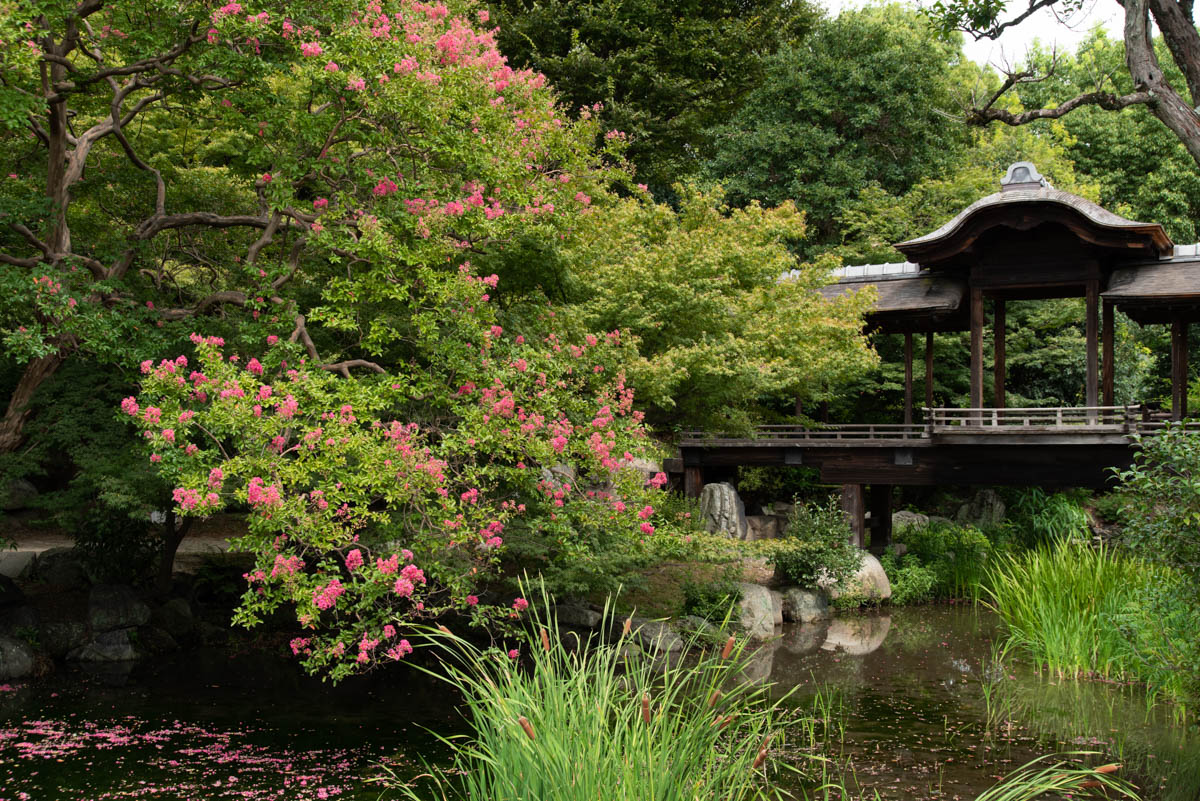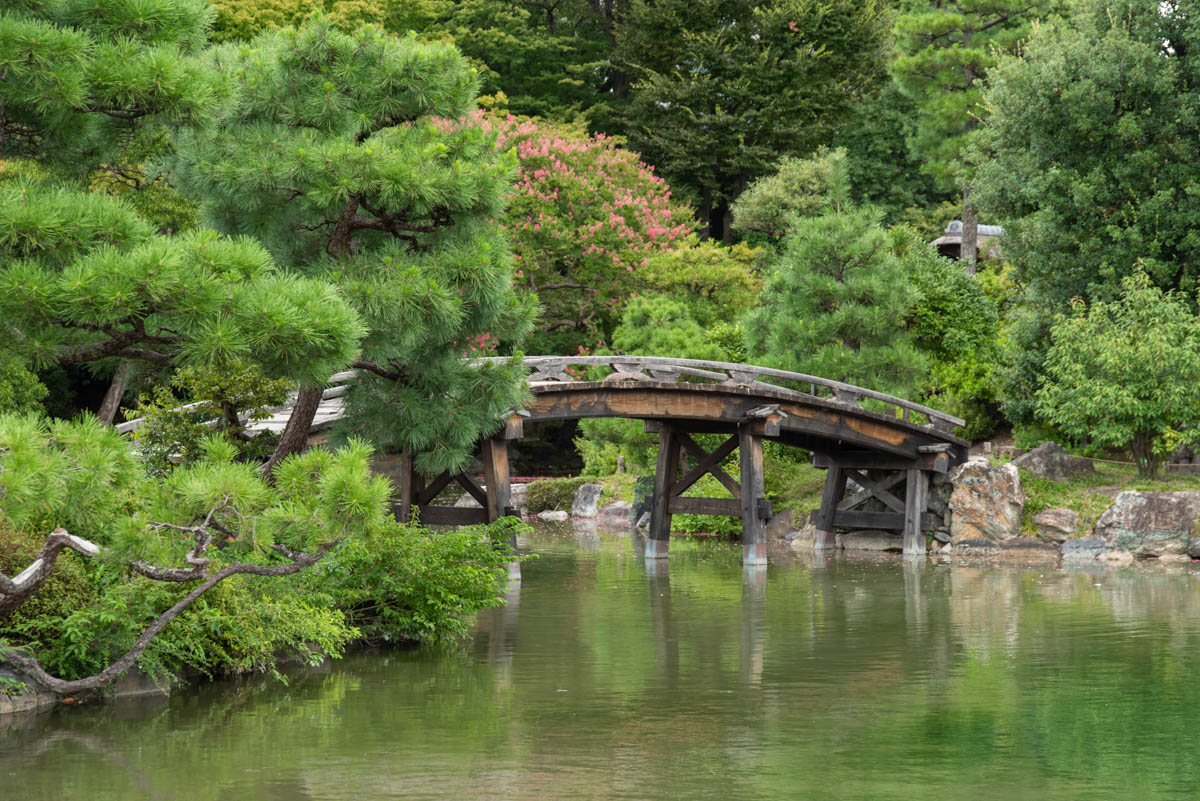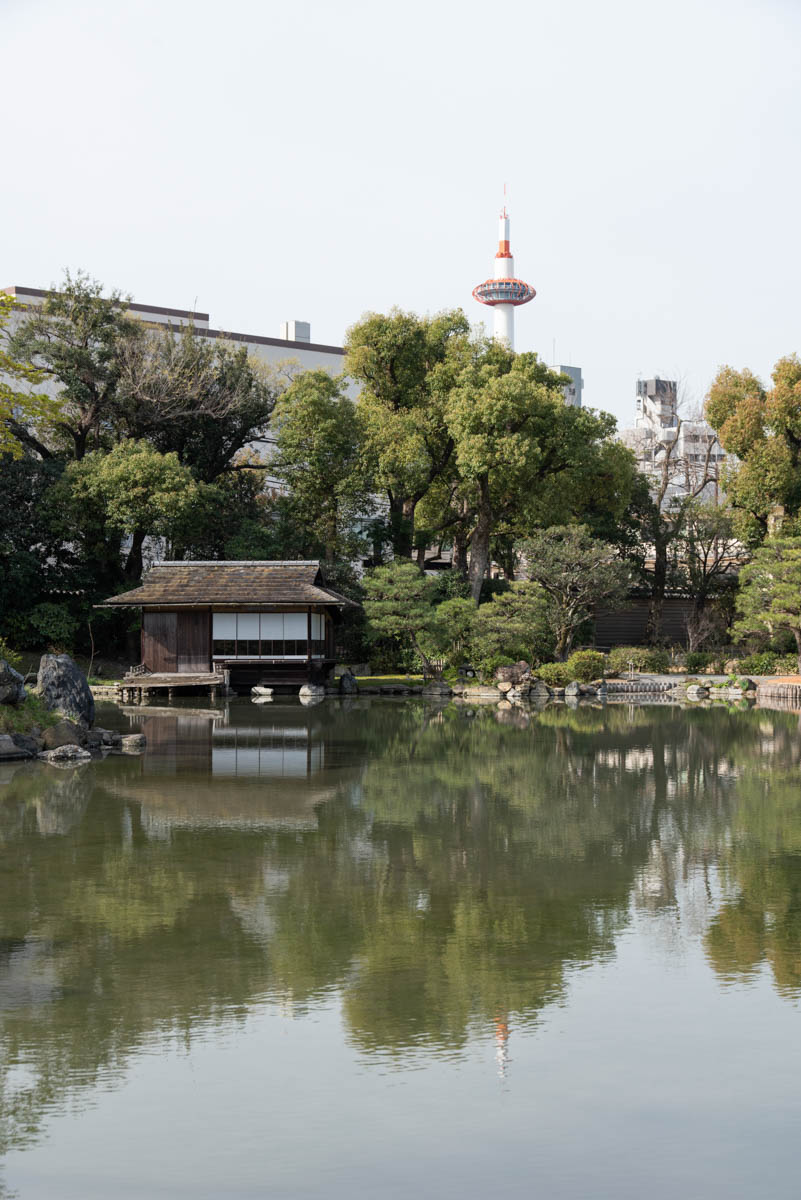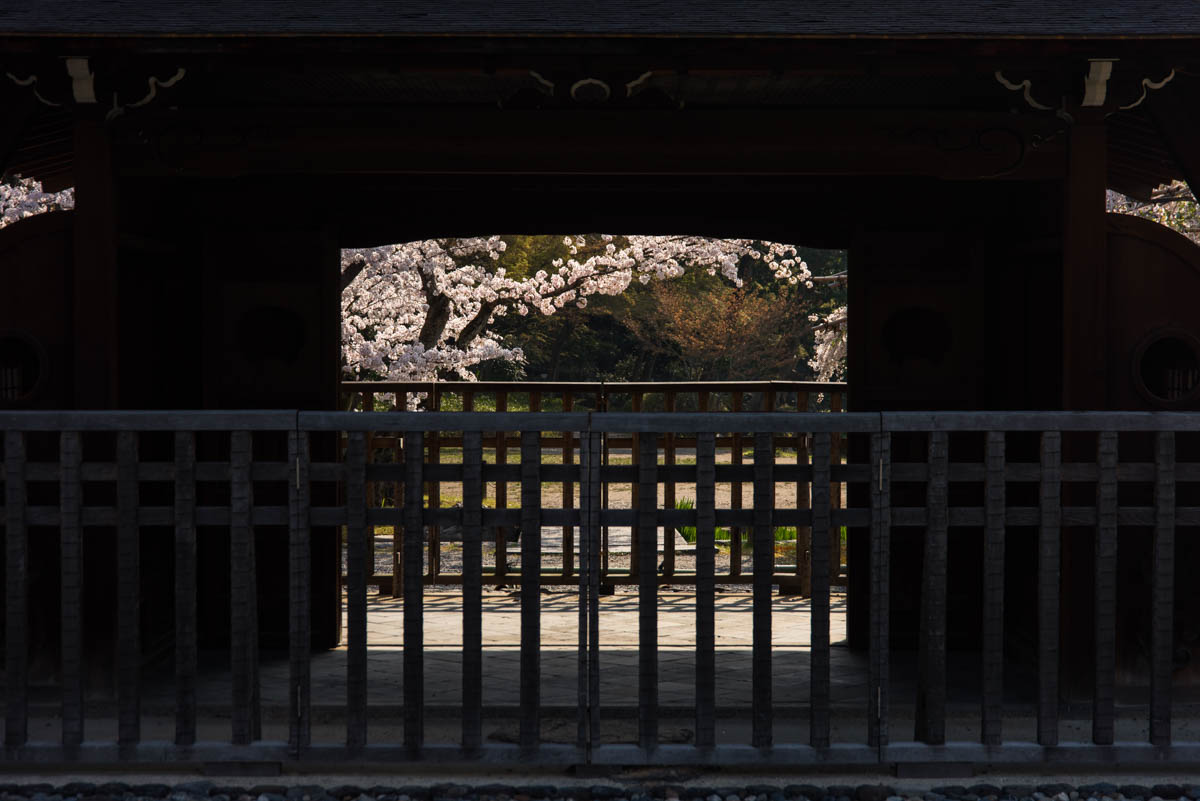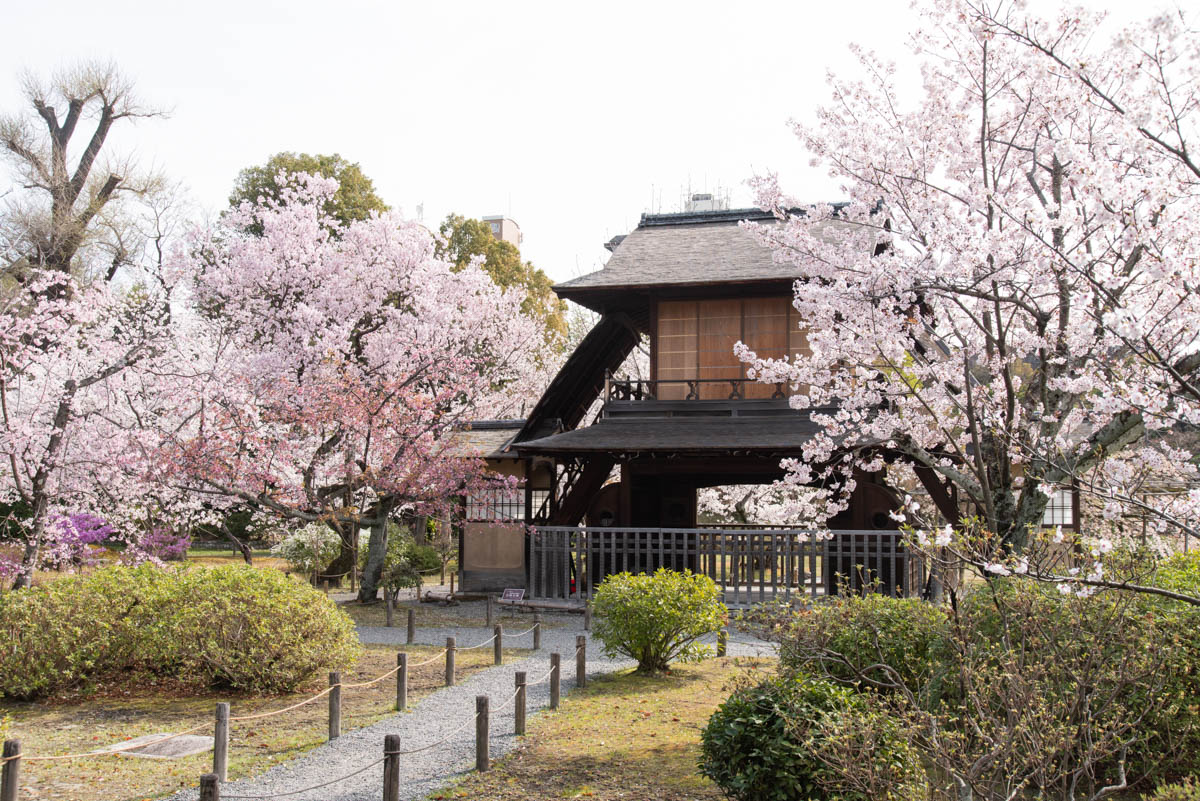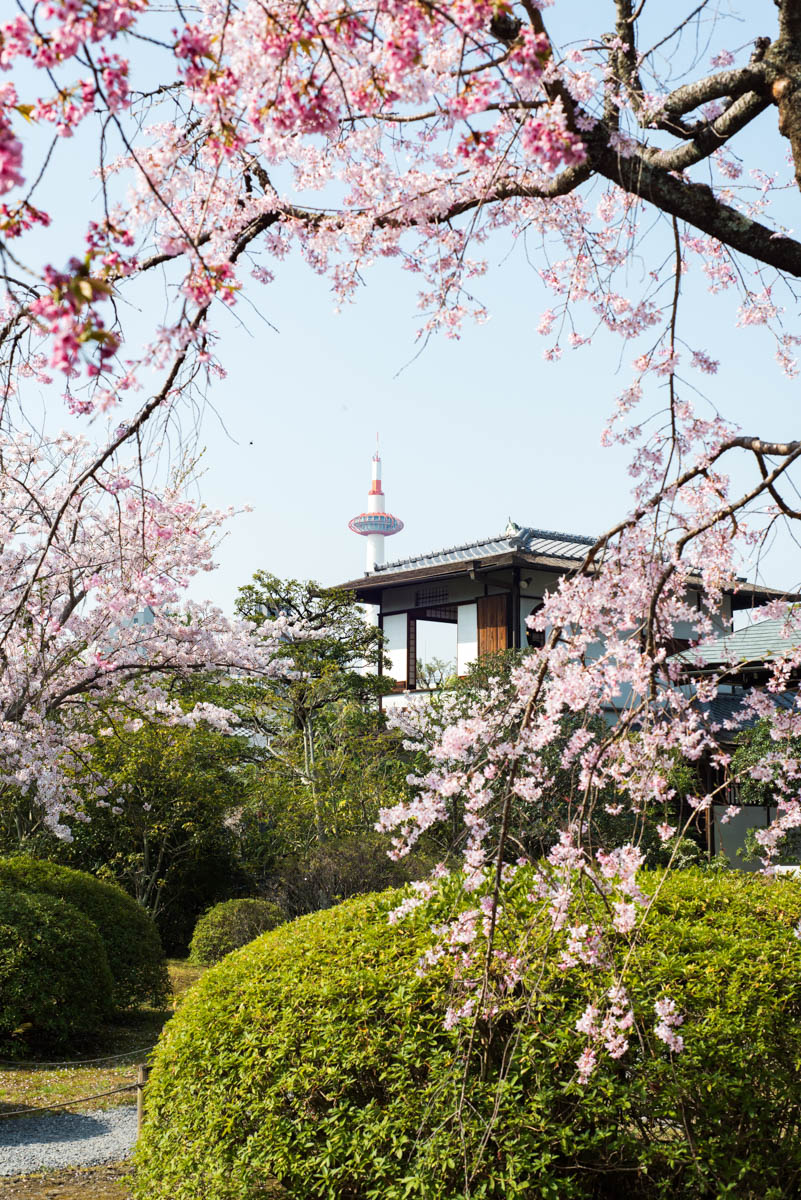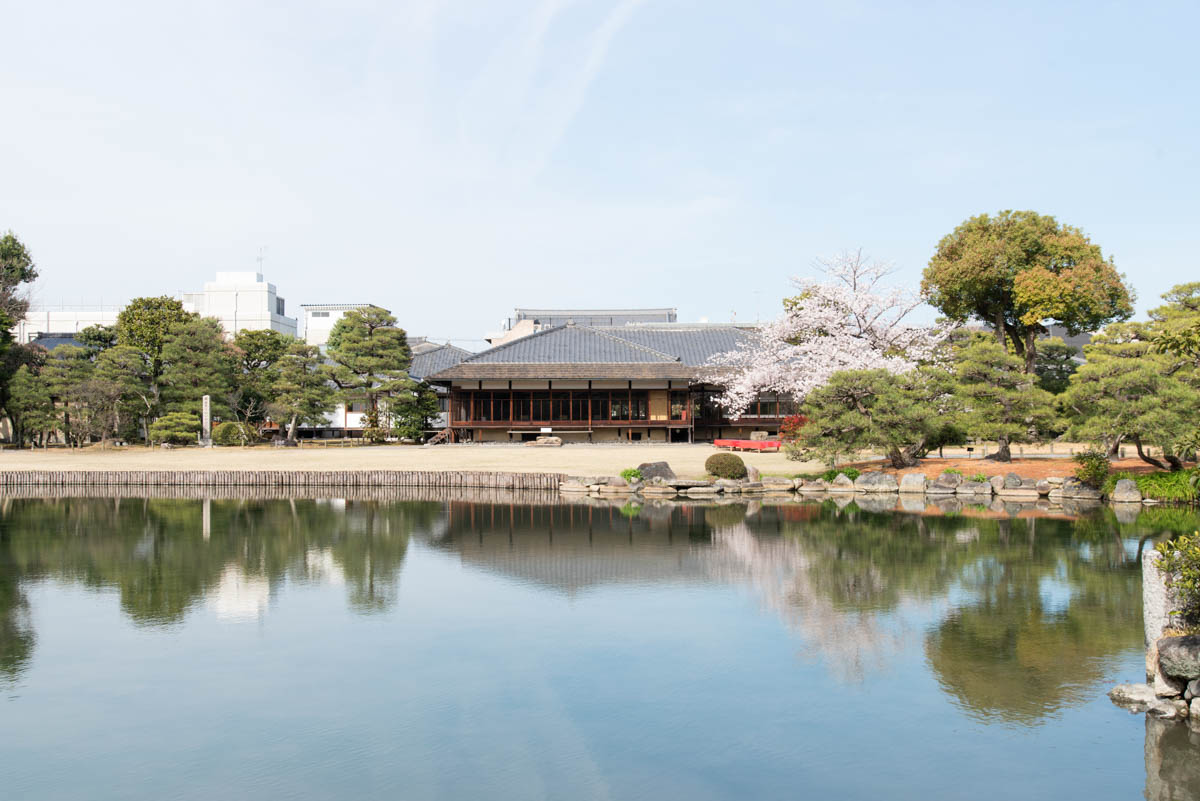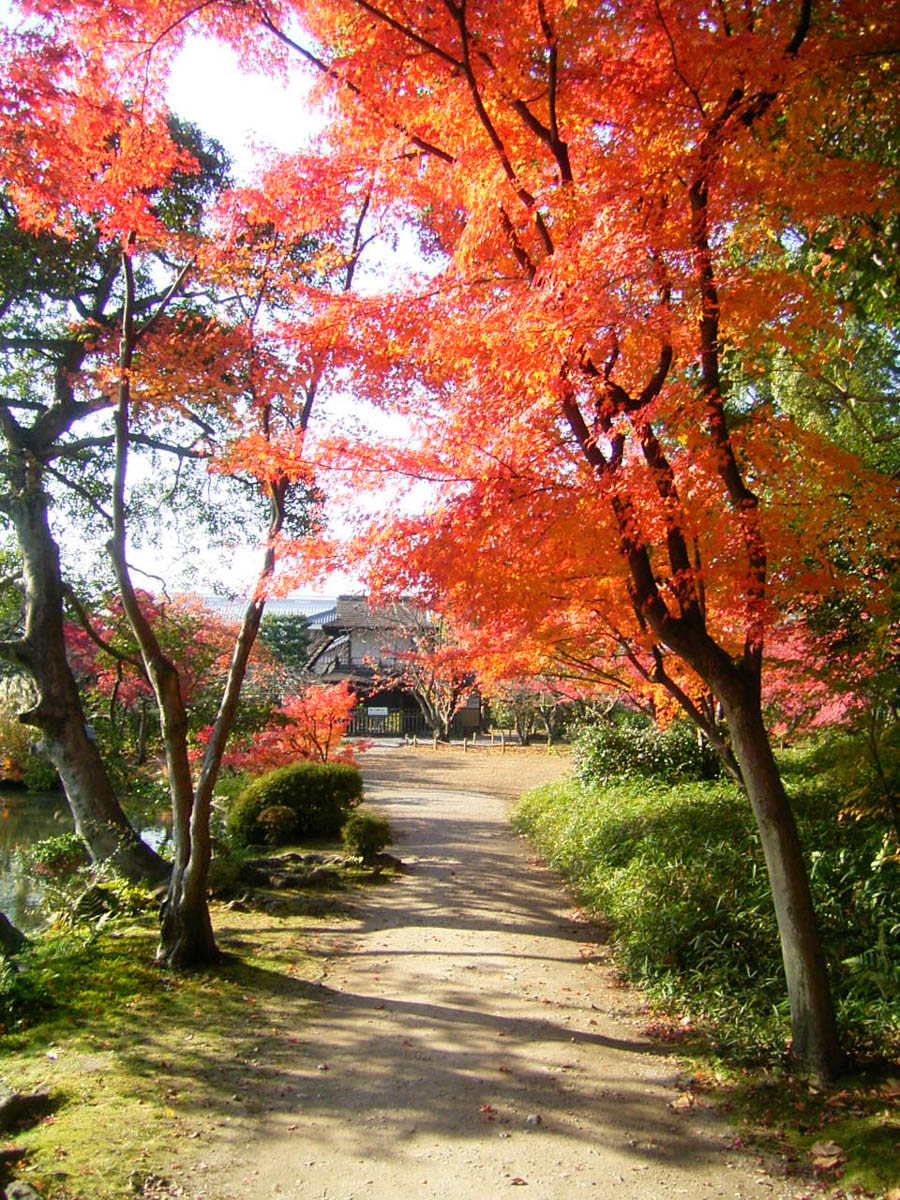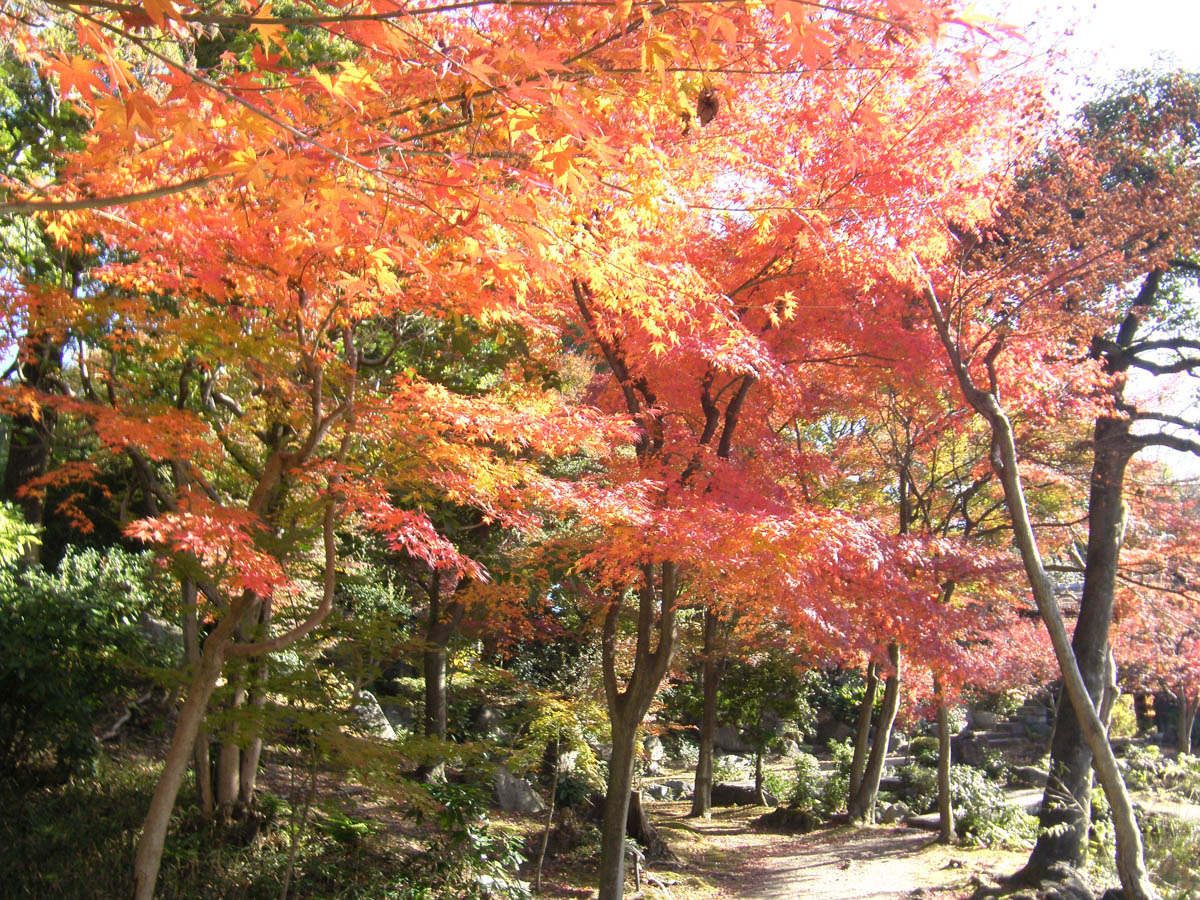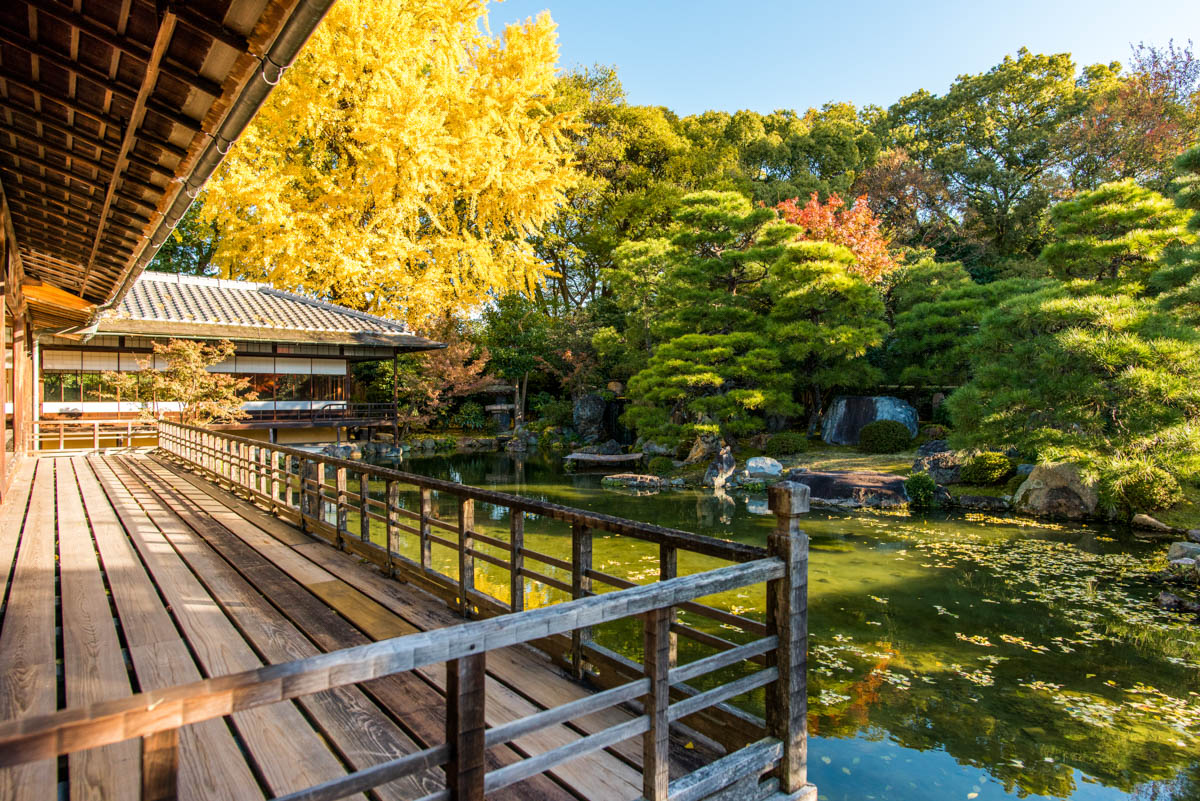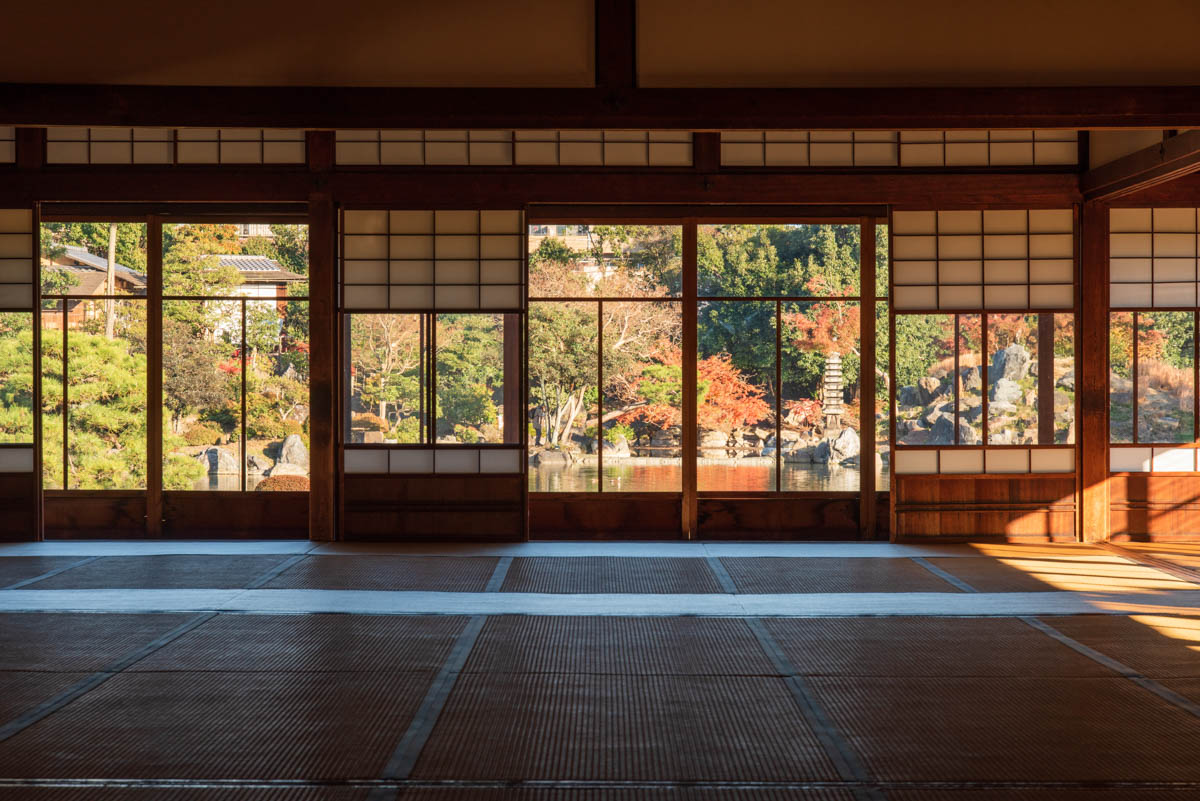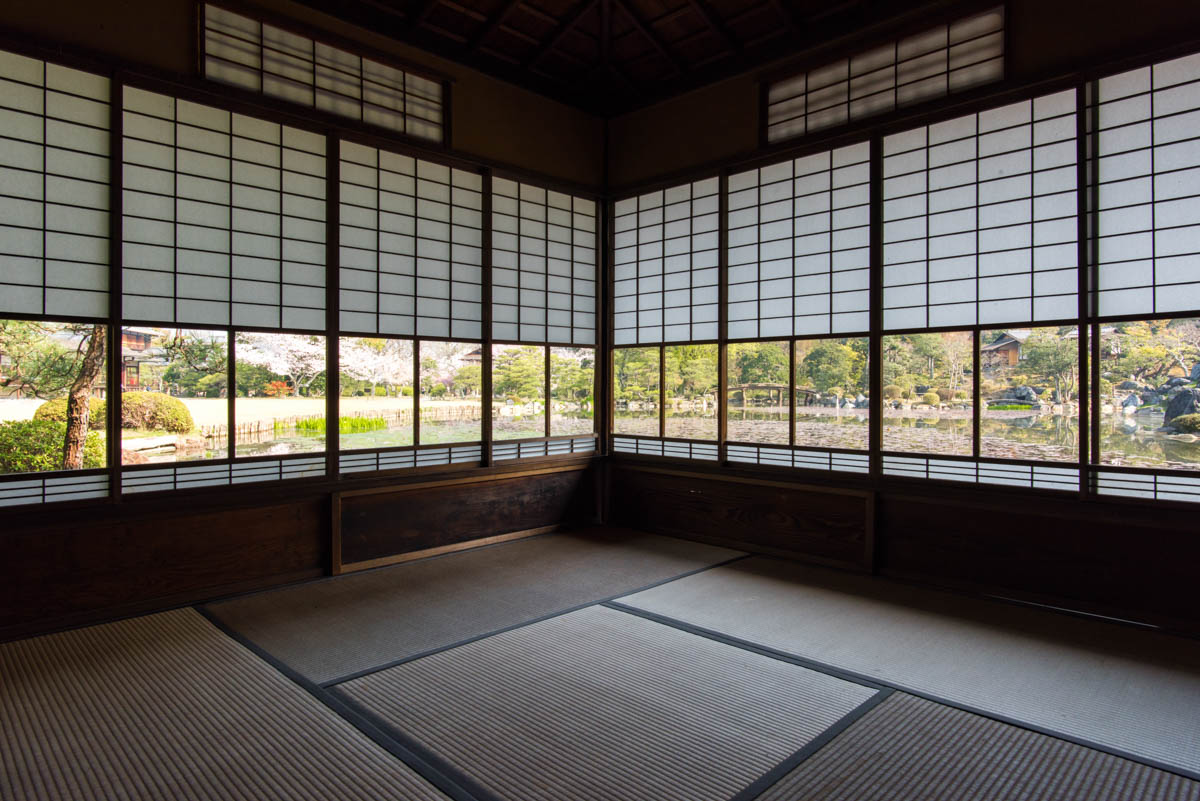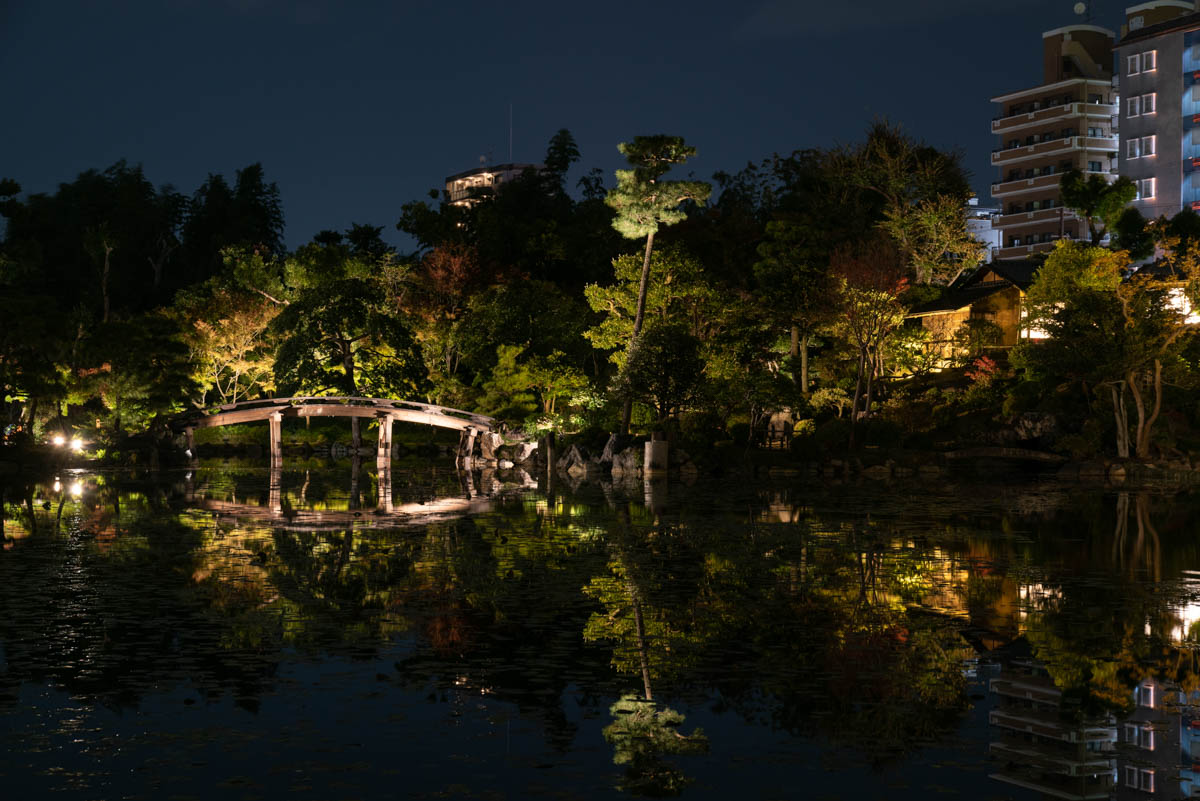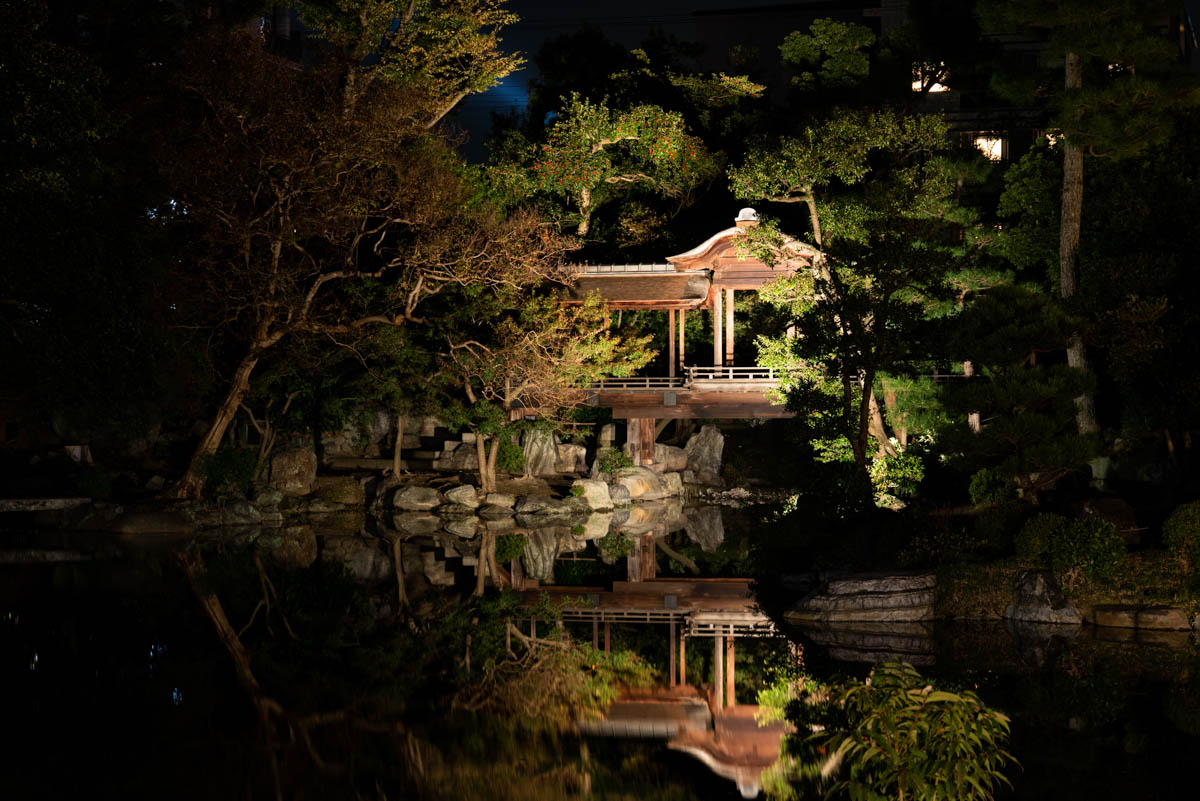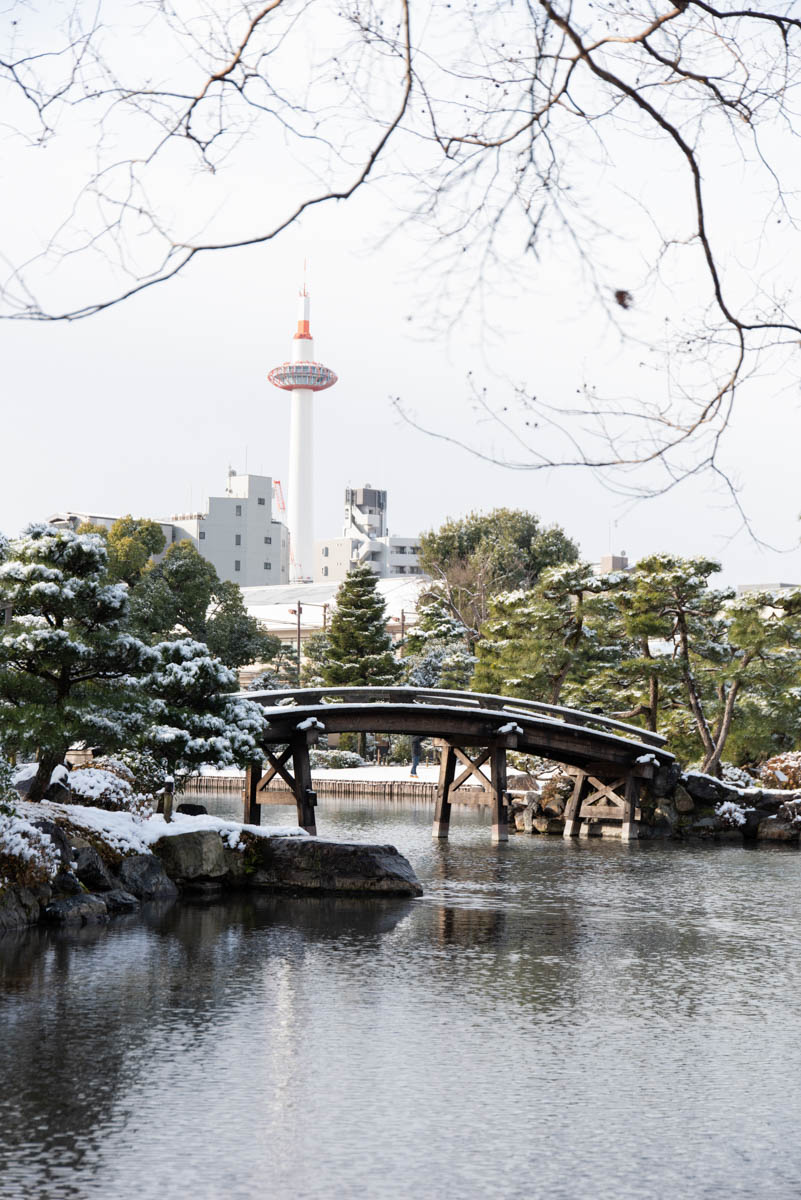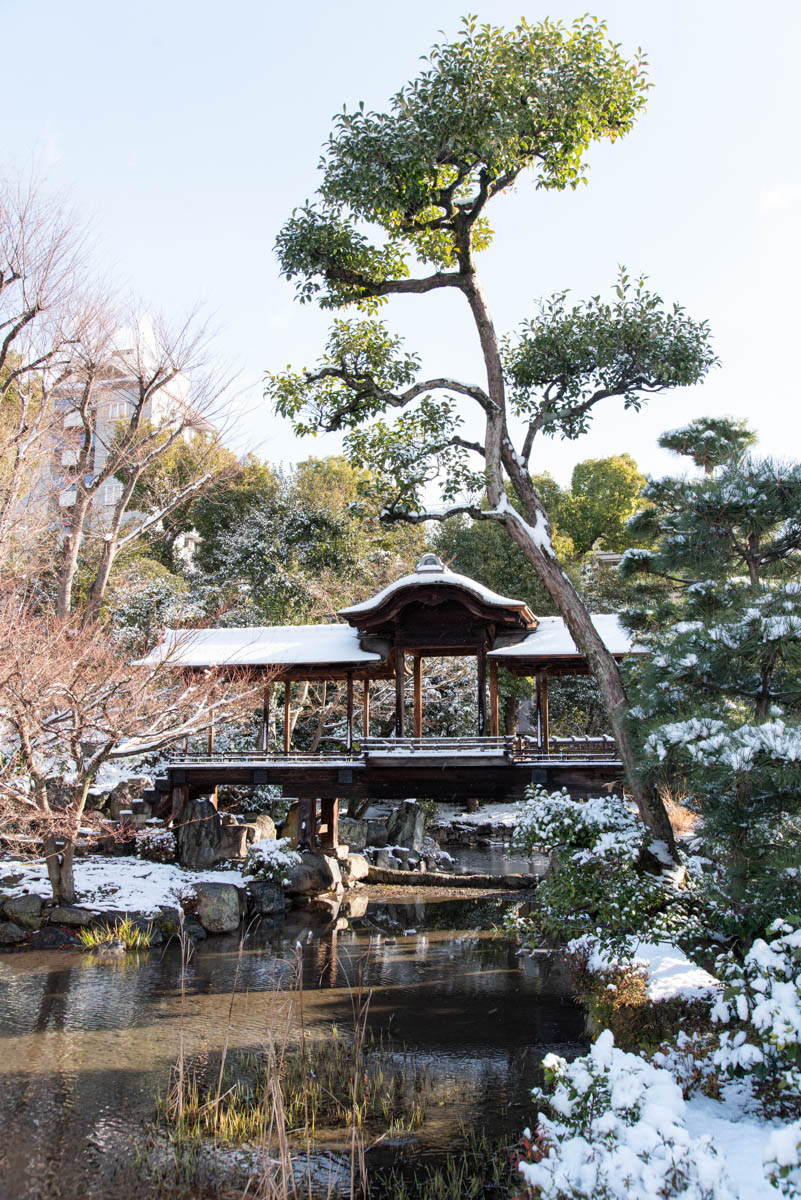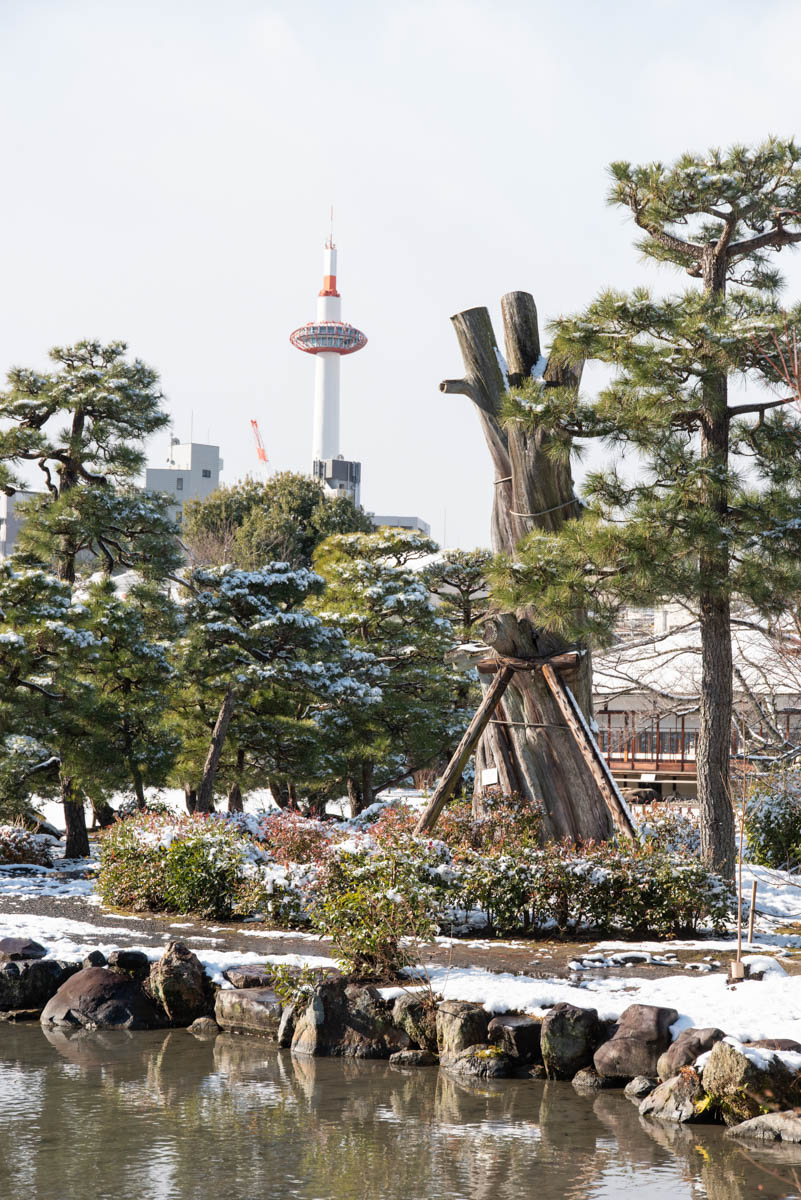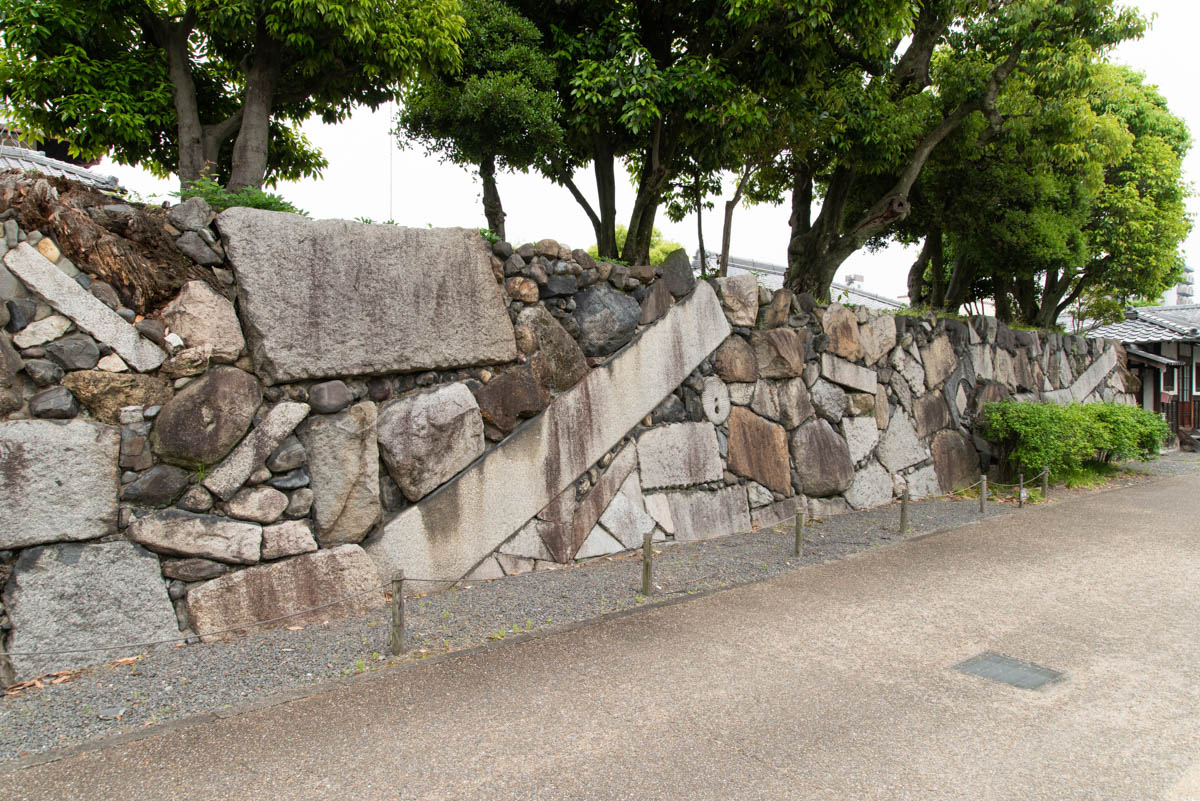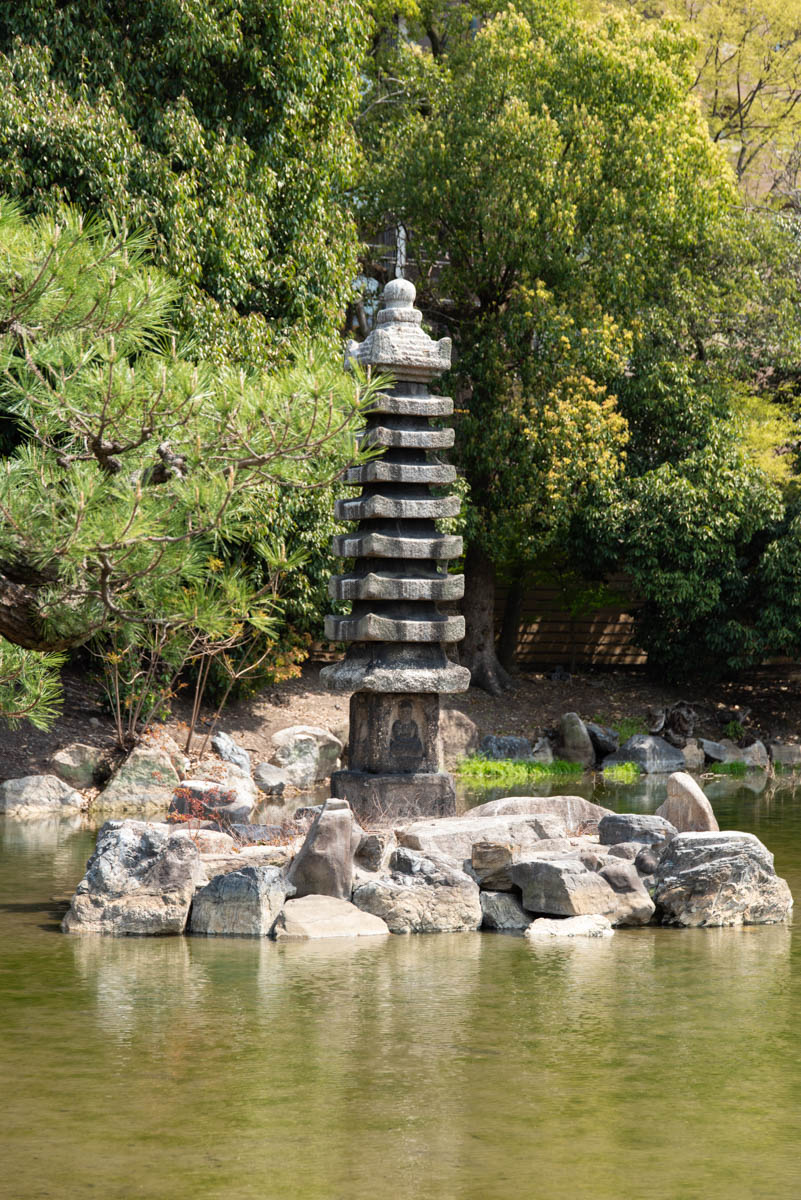Shosei-en Garden
Shosei-en is a garden that belongs to Higashi Hongan-ji Temple, the head temple of the Otani school of Shin Buddhism, but is detached from its main temple grounds. It is also known as Kikoku-tei (or Trifoliate Orange Villa) because it is surrounded by trifoliate orange trees.
Higashi Hongan-ji Temple was founded after Tokugawa Ieyasu, the first shogun* of the Edo period (1603-1868), donated land to it in 1602. Shogun Tokugawa Iemitsu later donated additonal land to the temple in 1641. Shosei-en was created on part of this added land when Sennyo, Higashi Hongan-ji Temple's thirteenth head abbott, retired in 1653.
As the place where acquaintances of the head abbott and even central figures from the Edo government were invited for receptions, Shosei-en enchanted many people. Among the many poets to extol its beauty was Rai Sanyo, a famous scholar of Chinese classics who wrote "A Record of Shosei-en" (Shoseien-ki) in 1827.
Shosei-en is an outstanding Japanese garden whose thirteen scenic highlights and other features pass on Edo period scenery to the current day.
Today, Shosei-en is also noted for its value as a treasure house of biodiversity. Thanks to many years of proper management, it is now praised as a habitat for a diverse range of endangered animals. In 2024, it became the first case of a Buddhist temple or a nationally designated Place of Scenic Beauty to be recognized by the Ministry of the Environment as an OECM (Other Effective area based Conservation Measure).
*"Other Effective area based Conservation Measures" is a program by the Ministry of the Environment to recognize areas where biodiversity is being preserved through civic efforts.
*Starting from the late twelfth century, the Japanese title "shogun" ( or generalissimo) was given to the head of the military branch of Japan's government. During the Edo period, the shogun was a military ruler whose power extended over the entire country.
- Location:
- Shimogyo-ku, Kyoto
- Accessibility:
- open to the public
- Garden construction period:
- in Edo period

